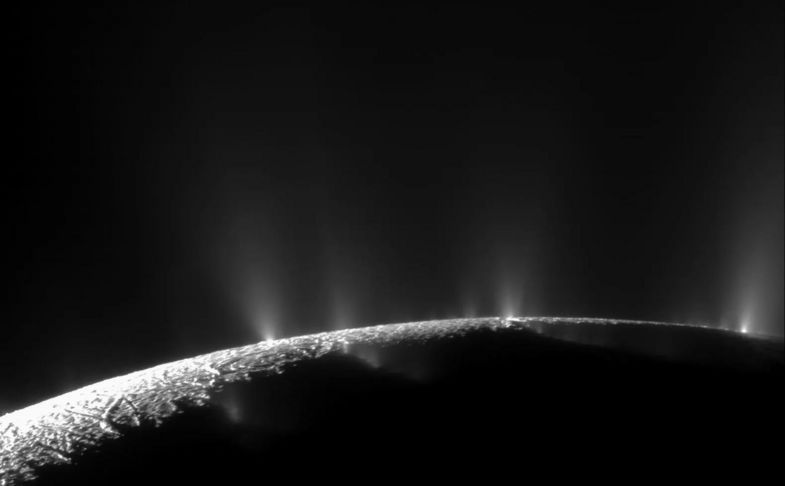Saturn’s moon Enceladus is known for its cryovolcanic “geysers” that shoot gas and solid material into space. These emissions consist largely of tiny grains of ice that originate from an ocean of liquid water located deep beneath the moon’s frozen surface. Similar processes probably occur on Jupiter’s moon Europa.
It is possible for space probes to analyse these ice grains with mass spectrometers, thus providing insights into the composition of subsurface ocean water. In novel laboratory experiments, scientists have succeeded for the first time in simulating the presence of bacterial building blocks in mass spectra of ice grains. “In our experiments, we show that future spacecraft would have the technology to detect DNA, lipids and even metabolic intermediates from these bacteria, if such molecules are present in the emitted ice grains,” explains Professor Abel, one of the study’s lead authors. “This would be possible even if the biomolecules were present in only a few ice grains at very low concentrations.”
In their study, the scientists analysed two different bacterial species and found that some of the biomolecules studied differed significantly from each other, leaving different biological ‘fingerprints’ in the mass spectra depending on the bacterial species. “This allows us not only to identify bacterial components on extraterrestrial marine worlds, but also to distinguish between different bacterial species,” emphasises Abel.
The study findings come in time for the launch of the Europa Clipper mission to Jupiter’s moon Europa, which NASA has scheduled for October 2024. The spacecraft is expected to carry an impact ionization mass spectrometer on its mission, which the authors of the current study were instrumental in planning. They will then also later evaluate the data produced by this device. “Now that it has been confirmed that the technology is capable of recognising the building blocks of life, the results of the mission have the potential to be highly interesting and relevant,” Abel explains.
The international study was conducted in collaboration with scientists from the University of Zurich, the Open University in Milton Keynes, NASA’s Jet Propulsion Laboratory in California, Freie Universität Berlin, and Leipzig University.
Original title of the publication in Astrobiology:
“Toward Detecting Biosignatures of DNA, Lipids, and Metabolic Intermediates from Bacteria in Ice Grains Emitted by Enceladus and Europa”, doi.org/10.1089/ast.2022.0063






























































